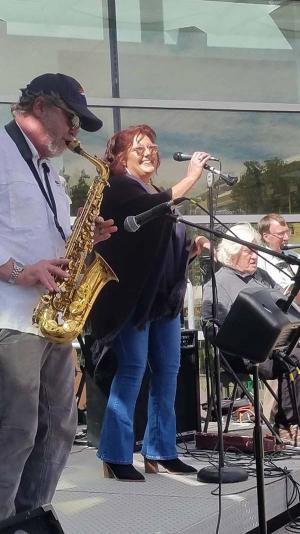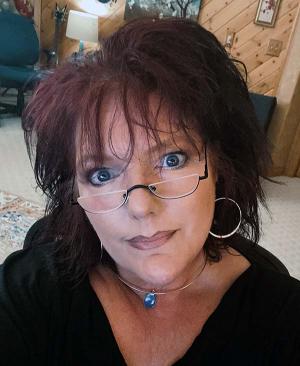Five questions for Mary Coussons-Read

Mary Coussons-Read brings no small number of perspectives to her role as chair of Faculty Council, a systemwide governance group. Her experience as a faculty member at CU Denver and UCCS naturally informs her view, as does time spent as an administrator at both campuses. Her introduction to the CU system came as a postdoctoral student at the CU Health Sciences Center, the precursor to the CU Anschutz Medical Campus.
“Having been an administrator and a faculty member puts me in a unique position in governance,” she said. “I know the realities of the constraints that exist in running a complex organization. And I no longer believe there’s some pot of gold at the end of the rainbow that administration is not sharing with the rest of university. We’re really all in this together.”
Now a professor of psychology at UCCS, Coussons-Read’s road to her current leadership role began at CU Denver, where the Faculty Assembly elected her chair.
“It’s an important part of my service,” Coussons-Read said of her time spent on campus assemblies and the system council. “CU is one of the few large, public universities that really seeks to have shared governance be a cornerstone. I am very committed to doing my part to participate in that.”
1. How do you define shared governance?
Part of it is a trust-centered collaboration for the good of the university and all its constituents. So transparency, trust and open dialogue – within limits – is really paramount. It means the governance groups have to be candid with leadership about our concerns while also bringing something to the table to try to move things forward. On the other side, we need leadership to be open to collaboration and negotiating in good faith.
Some of it is dependent on the people and some on the environment. But communication is probably the biggest piece of this.
As faculty, we need to be willing to roll up our sleeves and collaborate instead of just complaining that things are not going the way we want them to. I’ve seen real growth in this respect recently, especially regarding adjusting to the COVID pandemic.
All decision making, to be clear, is not necessarily within the purview of faculty. The academic side of the house is where faculty are supposed to take the lead. There are other areas, such as budget, where the faculty are responsible for providing input, but function in more of a consultative capacity. Being included in any conversations that are relevant to the work we do as faculty is helpful and important. The same goes for staff and students.
2. How will Faculty Council be engaged in the search for the next CU president?

I listened in on the September meeting of the Board of Regents Governance Committee. There was a lot of thoughtful discussion in that group about the search policy changes. I’ve been impressed at how attentive the administration and that committee are to input that faculty and staff have given on the policy.
At the Faculty Council’s August meeting, we had a listening session with most of the members of the board. That was a very generative discussion.
I’m feeling confident we’ll have meaningful input – obviously, faculty will be on the search committee – and this will be a strong process. It’s clear to me the board is trying to create a transparent process focused on diversity, equity and inclusion, and it will provide an opportunity for a two-way interview. We need to interview candidates, but they’re also interviewing us. We need to make it clear that we stand ready to collaborate and we’re committed to making successful whoever’s chosen to be president.
3. What other priorities do you expect Faculty Council to address this year?
Clearly, the impact of COVID continues to be an issue on all the campuses. We’re continuing to see how the pandemic is affecting productivity, morale, mental and physical health, and student involvement. We’ll see how we can support the work of faculty and the assemblies on the campuses.
Diversity, equity and inclusion continues to be a focus for us, particularly in creating more diversity in the participants of Faculty Council. Underrepresented faculty tend to get pulled in many different directions, so asking them to do more can be challenging. We’re trying to figure out how to encourage the involvement of more underrepresented faculty at the campus assembly level and Faculty Council level.
One way we’re trying to get our arms around it is by having the chairs of three of our committees – Committee for Racial and Ethnic Equity; Lesbian, Gay, Bisexual, Transgender and Queer+ Committee; Women’s Committee; and (Dis)ability and Access Committee – serve as ad hoc members of the Executive Committee this year. There’s been discussion about how the Executive Committee can permanently connect to those committees. We want to rely on those experiences, voices and ideas to chart a course to get us to a better place.
The Campus and Workplace Culture Survey from Chief Diversity Officer Theodosia Cook’s office is going to be telling. I think it’s being conducted in a very thoughtful way and we are looking forward to having input in that process.
We’re still in close collaboration with Staff Council, thinking about how we can better support shared governance among our staff. They don’t have as much latitude in setting their schedules, so participation is a bit more of a challenge. We’re working with Staff Council Chair Ryan Untisz to try to create more parity between these two groups.
We’re also finishing revisions to the bylaws and constitution that Past Chair Joanne Addison helped get moving this summer.
4. You are at UCCS but have ties to CU Denver. Are there notable similarities and differences between your experiences at the two campuses?
I really feel an affinity for both campuses. I also was at the medical school, back in the day at Ninth and Colorado; I came as a postdoc in 1994.
I have tremendous respect for all our campuses. Obviously, CU Boulder is the flagship and CU Anschutz is the medical research powerhouse.
I see UCCS and CU Denver as places of opportunity for students who otherwise might not return to school, places where we focus on meeting students where they are.
CU Denver is now an HSI (Hispanic-Serving Institution), which is a real opportunity. The urban location of CU Denver on the Auraria Campus, which is shared with MSU Denver and the Community College of Denver, has always been an interesting one. I see just how much that campus has grown, and there really is some synergy between those three institutions on the campus now.
At UCCS, we have remarkable connections to our community with the military installations and the cybersecurity opportunities we have here. Those are just two great examples of the campus’s breadth and depth.
I’m proud to have been part of both campuses, which provide high-quality education that has different characteristics depending on the student population we’re serving. The students are what makes it worthwhile.
5. What’s the current focus of your teaching and research?
I was on sabbatical last year, and right now I’m teaching both my classes remotely. I have really embraced the challenges and opportunities of online education. What I’m teaching is a mixture of psychology and neuroscience and endocrine-immune science. Those topics are really fun for some students and not so fun for others, so I’m figuring out ways to engage students and meet them where they are.
My research has always looked at stress and health. I’m trying to practice what I preach: relax, don’t stress and be happy. But increasingly I’m turning my research to the Lyda Hill Institute for Human Resilience and looking at the biomarkers of stress. It’s a nice direction for me, as it’s a natural spinoff from my previous work, which was primarily looking at stress during pregnancy and how it affects birth and infant development.
I’m also developing OER (open educational resources), which involves working on a text book and related modules and laboratory experiences. It’s about the connection between medicine, biology, psychology and sociology. That’s a whole new learning experience for me.

